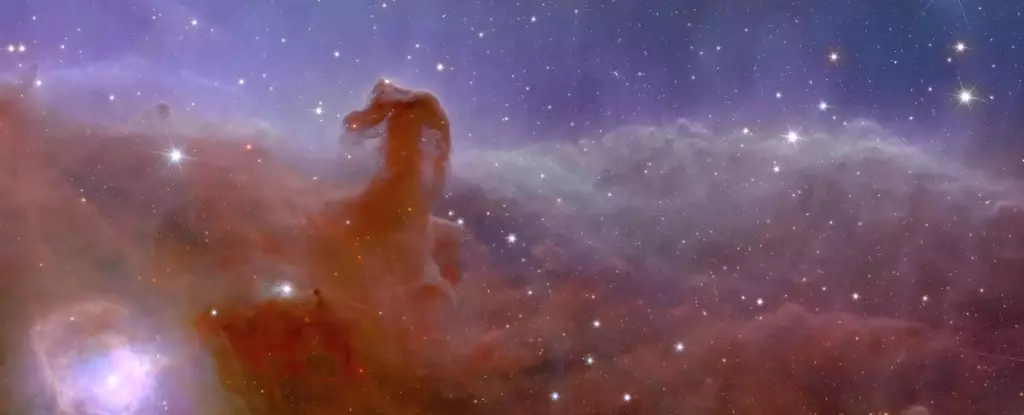The first images unveiled by Europe’s Euclid space telescope have astounded scientists and provided an incredible glimpse into the vast expanse of the Universe. These images, captured by Euclid’s wide-lens view, range from a renowned nebula to previously unseen galaxies located an astonishing 10 billion light years away. Scientists describe the images as a diverse and captivating collection of celestial objects, representing the galactic zoo of the Universe. Let’s explore these breathtaking snapshots from Euclid and the groundbreaking insights they offer.
One of Euclid’s striking captures is the Horsehead Nebula, also known as Barnard 33. Located 1,375 light years away, this nebula presents a captivating sight with a giant red horse seemingly rearing its head against a backdrop of swirling stars. The horse’s head, however, is nothing more than dark clouds in front of ultraviolet radiation emitted by Sigma Orionis, the eastern star on the belt of the Orion constellation. While this nebula has been observed before, Euclid is the first telescope to provide a comprehensive view in just one hour, thanks to its wide lens. Scientists are eager to analyze Euclid’s observations in the hope of discovering previously unseen Jupiter-sized planets and stars in their infancy.
The Enigmatic Globular Cluster
Euclid’s lens takes us to a collection of hundreds of thousands of stars bound together by gravity, known as a globular cluster. This particular cluster, located 7,800 light years away in our Milky Way galaxy, offers a mesmerizing sight. According to Euclid Consortium scientist Davide Massari, no other telescope possesses the capability to observe the entire globular cluster and distinguish its faint stellar members in the outer regions from other cosmic sources. Scientists aim to use Euclid’s observations to track stars trailing such globular clusters as they travel through our galaxy. Interestingly, the absence of visible stars trailing within these clusters raises the possibility of dark matter playing a crucial role in keeping the stars bound together.
Not all galaxies resemble the spiral beauty of our own Milky Way. Euclid has captured mesmerizing images of the irregular dwarf galaxy NGC 6822, situated approximately 1.6 million light years from Earth. While previous telescopes, including the James Webb Space Telescope, have glimpsed this galaxy, Euclid marked the first instance of capturing the entire galaxy within a mere hour. The stars in NGC 6822 are notably low in metal, and scientists plan to study and analyze them extensively to gain insights into galaxy evolution during the early Universe.
IC 342, known as the hidden galaxy due to its challenging visibility behind our own Milky Way’s disc, shines through Euclid’s infrared vision. This spiral galaxy resides approximately 11 million light years from Earth. Euclid’s infrared capabilities have unlocked a revolutionary view of IC 342, revealing never-before-seen globular clusters, as stated by the European Space Agency (ESA). This groundbreaking capture marks a significant breakthrough in the field of astronomy and presents opportunities for further exploration and discovery.
The Astonishing Perseus Cluster
Euclid’s image of the Perseus Cluster, located 240 million light years away, is a marvel in itself. Comprising a thousand galaxies, this cluster holds a captivating secret. Against the background, more than 100,000 additional galaxies emerge, situated an astounding 10 billion light years away. ESA has described this particular image as nothing short of a revolution for astronomy. The team was thrilled to discover low-level light emerging not from the cluster, but from stars resulting from collisions between galaxies. This intriguing observation raises questions about the presence of dark matter, as these stars defy gravitational pulls and remain outside their respective galaxies. Although circumstantial, this evidence opens exciting avenues for future research into the distribution of dark matter throughout the Universe.
As Euclid continues its mission, scientists remain optimistic that this groundbreaking space telescope will unravel more mysteries surrounding dark matter and dark energy, entities that comprise 95 percent of the Universe yet remain enigmatic. The astonishing snapshots captured by Euclid provide humankind with mesmerizing visuals, fueling curiosity and inspiring further exploration into the wonders of the Universe.


Leave a Reply